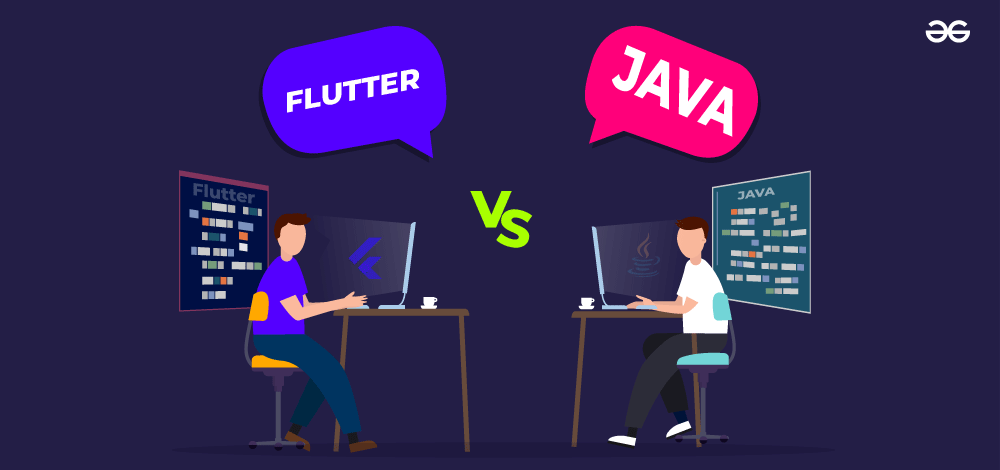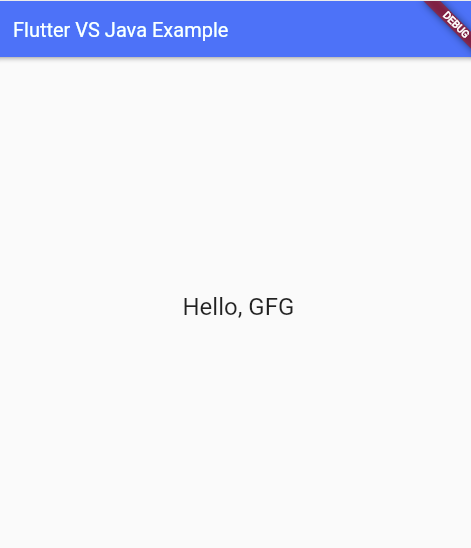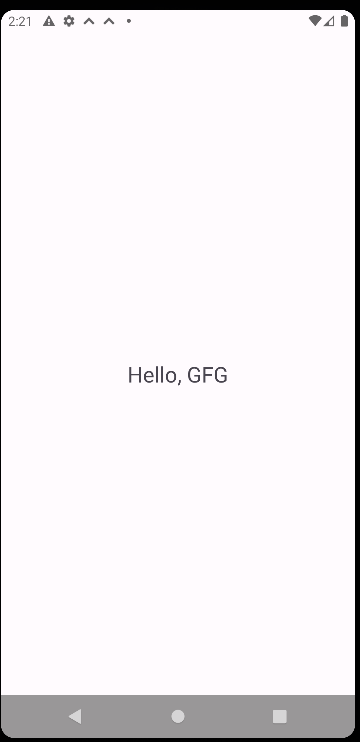Here, we are going to discuss the two most popular technologies for making apps i.e. Flutter and Java. Imagine it like a showdown between two champs: Flutter and Java. No matter if you’re new to coding or a pro, we’ll check out what makes these languages tick. So without wasting any time let’s explore the strengths and weaknesses of both technologies together.
As we learn more about Flutter and Java, we’ll find out what they’re good at and where they might have a few tricks up their sleeves. But before jumping on the differences between the two let’s understand What is Flutter? and What is Java? So Let’s begin.
What is Flutter?
Flutter is a software development kit(UI) created by Google. It was introduced in the year 2017 and has received substantial popularity among mobile app developers. Flutter gives mobile developers(Android and iOS) a native-like mobile application experience. Flutter uses dart as a programming language which is very similar to other languages like Java and very easy to learn.
Google Ads, Google Pay, and ClasterMe are a few popular applications that are developed using the Flutter platform.
Advantages of Flutter:
- Hot-reloading: One of the most developer-friendly features of using Flutter is its hot-reloading capability which takes seconds or a fraction of a second to render the recent code changes done by developers. It helps developers to save lots of time.
- Cross-platform support: With a single code base Flutter allows developers to develop Android and iOS applications along with ensuring consistency in design and functionality.
- Rich widget library: Flutter comes with an extensive library of Pre-built Core widgets(Text, Images, Buttons, Icons) , Layout widgets(Row, Column, Stack, List), Material Design and Cupertino widgets.These widgets are has huge collections of properties that allows users to customise widget in deep level.
- Increasing Community support: Though it has not been long in the cross platform application market, the Flutter community has grown significantly. resulting in a wealth of resources, libraries, and plugins to aid in development. The community continuously gives contributions to the growth of Flutter by creating open-source packages and plugins.
Disadvantages of Flutter:
- Flutter was introduced in the market a few years back only, so its community is still growing and developers need to invest time to learn.
- APK or IPA build using flutter has always more in size compared to Java based Android and swift based iOS applications.
- Flutter might not be the correct choice for Application which needs hardware support like Bluetooth, sensors, fingerprint supports. In such cases Java can give better user experience.
What is Java?
Java was originally developed by Sun Microsystem and later on acquired by Oracle, is the most popular object oriented programming language which is used to develop Mobile, Web and cloud applications. For Android development it has been the primary language(On May 7, 2019 Google declared that it had adopted the Kotlin programming language as its preferred choice for Android app developers). Java is still the primary choice for new Android learners..
Since Kotlin is introduced in recent years only, most applications available in marketplace are developed in Java only.
Advantages of Java:
- Grown Community: Java has been ruling the industry for many years, its community has grown much over the years. Due to its long presence it has huge libraries and tools developed.
- Easy Maintenance(Time and Cost): Long presence and wide industry adoption makes Java based projects easy to maintain in terms of time and cost.
- Memory consideration: Since applications developed using Java are natively compiled they consume less memory then applications developed using Flutter.
Disadvantages of Java:
- Developer migration: Since Google has introduced Kotlin as official Android language developers are migrating from java to Kotlin. Also feature like null safety, extension functions and many more attracting developers towards Dart and Kotlin.
- Slower Development Cycle: Due to absence of feature like hot reload develop app and testing small changes takes time in java compared to flutter.
Flutter vs Java
Now we will have a close look at the what is the difference between Flutter and Java by considering different following aspects like language, performance, speed cost etc.
|
Basis |
Flutter |
Java |
|---|---|---|
|
Language And Syntax
|
Dart’s syntax is modern and very similar to other languages like java script. Also come up with features like control flow, null safety and it gives a good quality product. Dart also supports implicit type conversion which helps users to save time while coding. Example of declaring variable: var message = “Hello GFG”; |
Java is also well popular and easy to learn but in the absence of null safety, control flow features developers have to spend more time in developing compared to dart. Java does not provide such a feature so developers need to take care while declaring variables. Example of declaring variable: String message = “Hello GFG“; |
|
Development Speed
|
Hot reloading saves a good amount of time for developers while developing Applications with Flutter. It takes seconds to render the latest code changes. |
Android developers has to re run app to check even small changes which consumes more time then Flutter.
|
|
Cross Platform support |
Flutter provides a single code base to build Android and iOS Applications with ensuring consistent UI user experience. |
Mobile developers have to code in Swift or Objective C to build iOS Applications, since Java does not support iOS applications. |
|
Cost Effective
|
Developing Mobile applications is very cost effective since with a single code-base client can get Android and iOS Application. |
As developers have to code separately for developing Android and iOS applications, the cost of these applications are high. |
|
Community
|
Smaller community than Java as Flutter has been introduced by Google a few years back only. |
Since Java is well established in industry its community is vast and hence it has more tools and plugins compared to Flutter. |
|
IDE Support
|
Flutter developers mostly use Android Studio for developing Android and iOS applications. Visual Studio Code is also another option available for developers to develop apps. |
Java also supports Android Studio for developing Android applications. Apart from this developers can use Eclipse or IntelliJ Idea for Java-based Android projects. |
|
Need of XML for screens |
No XML layout is required for developing a single screen. Developer can create entire screen with single dart file. |
To create a single screen using Java requires the user to create an XML file for UI and Java file for logical changes. |
Example
We will see now code example for creating screen with “Hello GFG” label center in screen.
Dart
import 'package:flutter/material.dart'; void main() { runApp(MyExampleApp()); } class MyExampleApp extends StatelessWidget { @override Widget build(BuildContext context) { return MaterialApp(home: Scaffold(appBar: AppBar(title: Text('Flutter VS Java Example'), ), body: Center(child: Text('Hello, GFG', style: TextStyle(fontSize: 24)), ), ), ); } } |
Output:
Above example will create a screen with the title ‘Flutter VS Java‘ and label ‘Hello GFG’ title in screen center.
Java
import android.app.Activity; import android.os.Bundle; import android.widget.TextView; public class MainActivity extends Activity { @Override protected void onCreate(Bundle savedInstanceState) { super.onCreate(savedInstanceState); setContentView(R.layout.activity_main); TextView textView = findViewById(R.id.textView); textView.setText("Hello, GFG"); } } |
XML
<?xml version="1.0" encoding="utf-8"?> android:layout_width="match_parent" android:layout_height="match_parent"> <TextView android:id="@+id/textView" android:layout_width="wrap_content" android:layout_height="wrap_content" android:layout_centerInParent="true" android:textSize="24sp" /> </RelativeLayout> |
Output:
Above Example will display the default title with “Hello, GFG” label in center of the screen. You can notice here that for creating a single screen using Java you also need an XML file also which results in more development time.
Use Cases for Flutter:
- Cross-Platform Mobile Apps: Flutter would be the best choice for cross platform mobile application development. As with single code base you can write and deploy Android and iOS applications
- Rapid development. Flutter’s hot reload feature is suitable for startups and cases where projects require rapid development and frequent iteration needs. As developer can see the code changes very quickly
Use Cases for Java:
- Native Android App Development: For native Android app development java has been the primary programming language. It’s the best choice where requirements are native android specifically.
- Large Enterprise Applications: Large-scale enterprise applications like E-commerce, Banking, Medical Financial application Java would be more suitable then flutter.
Conclusion
Choosing between Flutter and Java totally depends on the requirements of Project along with the team’s expertise. If the project’s requirement is faster development with rich UI, cost effective and also requires cross platform support then in this case Flutter would be the best choice to go for. While for a well settled team with Java knowledge and require platform specific features or require hardware support like Bluetooth and sensors then Java would be more suitable in these cases.
The debate between Flutter and Java will never end as both have their own Advantages and Disadvantages. So choose either of the language based on your requirements and team’s capability.







